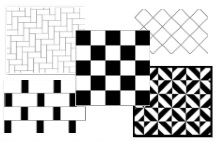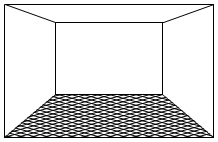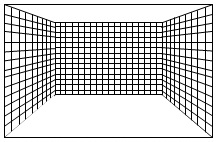- Home
- Tile Patterns
- Floor Tile Patterns
Floor Tile Patterns
Your floor tile patterns can really enhance the overall look that you’re going for in your home. For example, a small shiny mosaic tile or large plain tile will always enhance a contemporary look. A tumbled tile will create a farmhouse, country cottage or townhouse basement atmosphere.
Take a look at the tile patterns gallery for inspiration for floor tile patterns.
On this page we'll take a look at some practical things about using floor tiles in your home.
- Where to use floor tiles
- Choosing the direction to lay your tiles
- Joining floor tiles to other flooring materials
This page is part of the tile patterns series.
Where to use floor tiles
The rooms in which floor tiles tend to be used is generally dictated by the climate. In warm climates tiling is often used throughout the home.
In cooler climates you'll tend to find tiles in entrances and circulation spaces, kitchens and bathrooms. One thing to bear in mind though is that tile works very effectively with underfloor heating. That fact along with new tile designs that are available with 'warmer' textures such as wood imitation mean that tile might make it into more spaces in homes in cooler climates.

Don't forget the base board
If you're planning on having tile on the floor in a room, consider using tile for the base board (called the skirting board in some countries). It can be a great way to finish the look of the floor, and it stands up better to the wet when mopping the floor than a wood base board.
Choosing the direction to lay your floor tiles
Tiling patterns can be used to accentuate features in your home. Your tiling pattern can manipulate the visual appearance of a space, making it appear longer or wider. Take a look at these images and have a look at how the space looks when the tile is laid different ways.
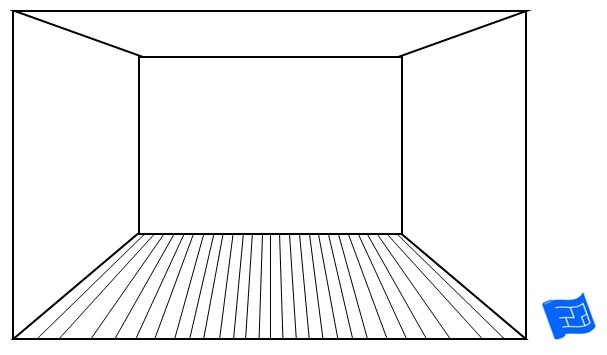 Laying floor tiles with an accent in line with your line of vision makes the room appear longer
Laying floor tiles with an accent in line with your line of vision makes the room appear longerI know that tiles aren’t plank shaped, but most tiling patterns do have an accent in one direction which will create the same visual effects but to a slightly lesser degree.
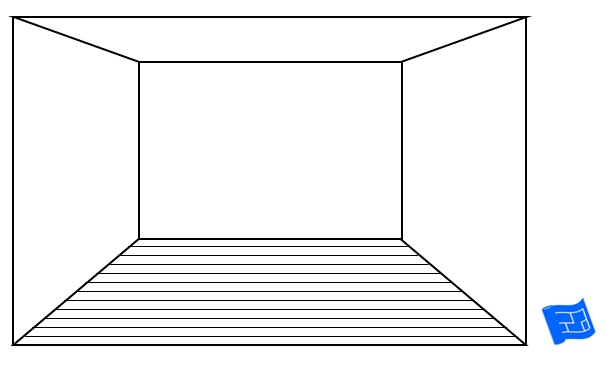 Laying floor tiles with an accent across your line of vision makes the room appear wider
Laying floor tiles with an accent across your line of vision makes the room appear wider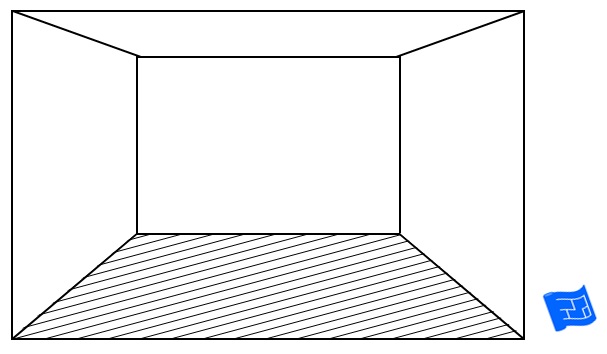 Laying floor tile diagonally is an interesting option
Laying floor tile diagonally is an interesting optionAn interesting option is to lay the tiles diagonally. In the image above you can see that this produces an illusion that makes the left side of the room look shorter the right hand side. This effect is very much reduced with furniture placed in the room, but take care with diagonally accented floor tile patterns in a space that has no furniture such as an entrance hall.
The other interesting thing about a diagonal design is that the eye tends to follow in the direction of the diagonal. If you're reading this in English you are used to reading left to right and we're most comfortable when we see patterns that go in this direction.
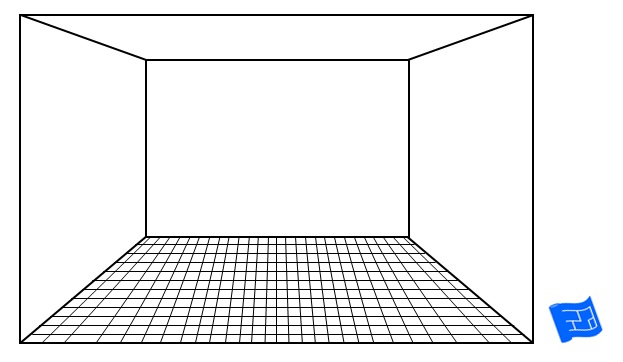 I think a square floor tiling pattern makes the eyes focus on the walls
I think a square floor tiling pattern makes the eyes focus on the wallsSquare tiling, laid squarely is a safe choice if you don't want to manipulate the way the dimensions of your room appear.
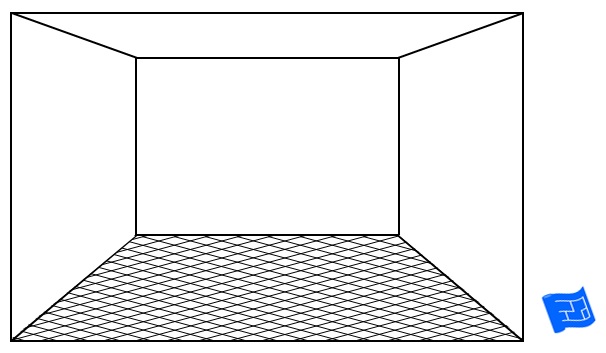 Laying tiles diagonally to the line of vision brings the focus more towards the floor
Laying tiles diagonally to the line of vision brings the focus more towards the floor
Defining space and creating rhythm with floor tile patterns
Borders, floor roses and tile patterns can be used in several ways to define space. For example, a tiling design with a border placed in a room in the same area where a rug might be placed can help define a dining or sitting area. Borders and tiles can be used to decorate circulation routes, creating more rhythm than a plan tile design.
Joining floor tile patterns to other floor surfaces
So what’s the best way to join an area of tiling with another surface? This depends on the circumstances.
Short joins - eg doorway - If the surface is changing from one room to another through a normal sized doorway you could use a transition strip. These strips are made out of metal or wood and are an inexpensive and quick way of covering the transition between two flooring materials. Another option here is to fabricate a larger strip out of wood or a material such as stone or marble.
If you’re dealing with a longer joining distance such as from tile to wood in a family kitchen / living room then a better alternative would be to use a schluter strip. This provides an elegant join.
It's important to select the right product depending on whether or the the join is going to be flat or not.
I think a flat transition is ideal but it isn't always possible. If you're in the position of laying all the surfaces at the same time, lay down the carpet or hardwood first. This is because it is easier to finely adjust the height of the tile surface by using more or less grout and mastic.
More Tile Patterns for you...
You might find these other pages on tile patterns useful.

